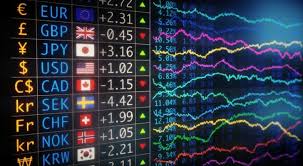
Forex Trading Basics: A Comprehensive Guide for Beginners
Forex trading, or foreign exchange trading, has gained immense popularity among investors worldwide. It offers the opportunity to profit from the fluctuations in currency values. However, for those new to the forex market, understanding its basics is crucial. In this article, we will explore the essential concepts of forex trading, providing a solid foundation for anyone looking to dive into this exciting financial realm. To learn more, visit forex trading basics https://forex-level.com/.
What is Forex Trading?
Forex trading involves buying one currency while simultaneously selling another. The forex market operates 24 hours a day, allowing traders to participate at any time. Unlike stock trading, which typically occurs during specific hours, the forex market is open five days a week, combining trading activities from centers around the globe, including London, New York, Tokyo, and Sydney.
Key Terminology in Forex Trading
Familiarity with basic terms used in forex trading will help beginners navigate the market more easily. Here are some essential terms:
- Currency Pair: Forex trading involves currency pairs, such as EUR/USD or GBP/JPY. The first currency listed is the base currency, and the second is the quote currency.
- Pip: A pip (percentage in point) is the smallest price move in a currency pair based on market convention. For most pairs, a pip represents a change of 0.0001.
- Spread: The spread is the difference between the bid price (the price at which a trader can sell a currency) and the ask price (the price at which a trader can buy a currency).
- Leverage: Leverage allows traders to control a larger position with a smaller amount of capital. It can amplify both profits and losses.
Understanding How Forex Trading Works
Forex trading is conducted over-the-counter (OTC), meaning that transactions are made directly between participants, often facilitated by brokers. The trading process involves several steps:
- Choose a reliable forex broker that offers trading platforms suited for your needs.
- Open a trading account and deposit funds to start trading.
- Select a currency pair to trade and determine the direction in which you believe the currency will move.
- Execute a buy (long) or sell (short) trade based on your analysis and market prediction.
- Monitor your trade and decide when to close it for a profit or cut your losses.
Types of Forex Analysis
Successful traders often rely on various forms of analysis to make informed decisions. The two primary types of forex analysis are:
Technical Analysis
Technical analysis involves examining price charts and using indicators to identify potential trading opportunities. Technical analysts believe that historical price movements can help predict future price behavior. Common tools include:
- Charts: Candlestick, line, and bar charts visually represent price movements over specific timeframes.
- Indicators: Tools like moving averages, Relative Strength Index (RSI), and Fibonacci retracements help traders identify trends and reversals.
Fundamental Analysis

Fundamental analysis focuses on economic indicators and news events that can impact currency values. Traders who utilize this method often pay attention to:
- Interest rates set by central banks.
- Employment data and unemployment rates.
- Gross Domestic Product (GDP) growth rates.
- Political stability and economic performance.
Developing a Trading Strategy
Having a well-defined trading strategy is crucial for success in forex trading. A clear strategy helps traders manage risk and emotions while maximizing potential profits. Here are a few steps to develop your trading strategy:
- Define your trading goals: Are you looking for short-term gains or long-term investments?
- Determine your risk tolerance: Decide how much capital you’re willing to risk on any single trade.
- Choose your trading style: Will you be a day trader, swing trader, or position trader?
- Test your strategy: Use demo accounts to practice and refine your approach without risking real money.
Risk Management in Forex Trading
Effective risk management is paramount in forex trading. Without it, even the most skilled traders can suffer significant losses. Here are essential tips for managing risk:
- Use Stop-Loss Orders: Set stop-loss orders to automatically close a trade at a predetermined price, limiting potential losses.
- Position Sizing: Determine the appropriate amount of capital to risk on each trade, typically not exceeding 1-2% of your total trading capital.
- Diversify Your Portfolio: Avoid putting all your capital into one trade; diversify across different currency pairs to manage risk better.
Choosing a Forex Broker
Selecting the right forex broker is crucial for a successful trading experience. Here are key factors to consider:
- Regulation: Ensure the broker is regulated by reputable authorities to safeguard your funds.
- Trading Platform: Look for a user-friendly trading platform that provides essential tools and features.
- Spreads and Commissions: Compare the costs associated with trading, including spreads and commissions, to choose a broker that offers competitive rates.
- Customer Support: Reliable customer support can help resolve issues that may arise during your trading journey.
Common Mistakes to Avoid in Forex Trading
New traders often make mistakes that can impact their success. Here are some common pitfalls to avoid:
- Failure to Plan: Trading without a plan can lead to impulsive decisions and significant losses.
- Emotional Trading: Allowing emotions to dictate trading choices can result in poor judgment and strategies.
- Lack of Education: Failing to understand the fundamentals of forex trading can hinder trading performance.
- Over-Leveraging: Using excessive leverage can amplify losses, putting your investment capital at risk.
Conclusion
Embarking on a journey into forex trading can be both exciting and challenging. By understanding the basics, including key terminology, analysis methods, and risk management strategies, beginners can build a strong foundation. As with any investment, continuous education and practice are vital for success. Start with a well-defined trading plan and lightly execute trades using a demo account before moving to live trading. Remember, forex trading is not just about making money; it’s about developing your skills and honing your craft over time.

